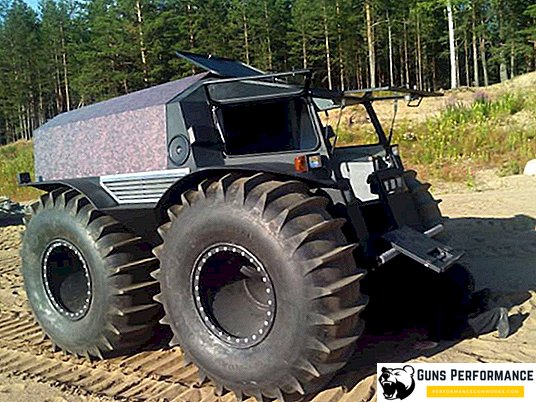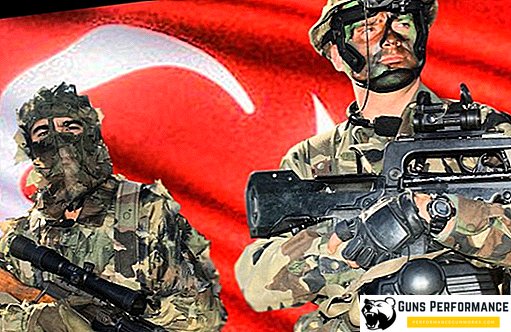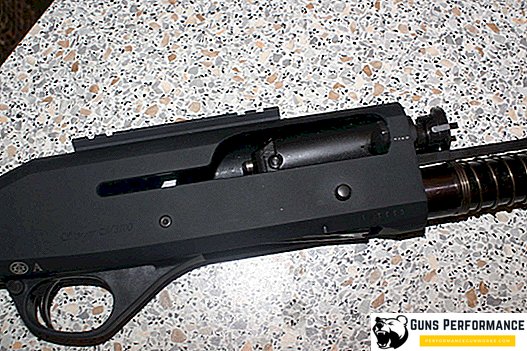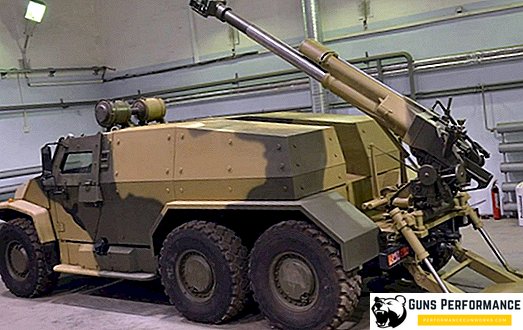
The 30s of the last century were a period of rapid development of aviation in the USSR. Air parades, films about heroes-pilots, opening aviation schools throughout the country, setting new records for altitude, speed and range of flight — aviation has become a real cult for the young Soviet Union. The heavy TB-3 bomber (or as it was also called ANT-6) is a real symbol of that era. Not a single parade managed without this giant, the TB-3 scores a lot of records; this plane landed on drifting ice floes and participated in the war in Spain.
In 1939, the TB-3 was decommissioned by Soviet bomber units, but after the start of the war, it again became operational. The ANT-6 was used as a bomber and transport aircraft throughout the war. The history of using TB-3 in the first months of the war is one of the most dramatic pages of Soviet aviation.
In recognition of the merits of the air veteran TB-3 was included in the air column of the Victory Parade, but due to bad weather, the flight of the aircraft was canceled.
At the time of its creation, the TB-3 was considered the pinnacle of design, many technical solutions used to create this aircraft determined the development of heavy aircraft for decades to come. This was the merit of the brilliant designer A. N. Tupolev and the team of the AGSC TsAGI, where they developed TB-3.
A total of 816 bomber units were built. Over the years of mass production, about ten aircraft modifications have been developed. The TB-3 was produced between 1932 and 1937.

The history of the creation of the legendary TB-3
The history of the TB-3 began in 1925 after the leadership of the Soviet Air Force turned to TsAGI with the requirement to create a heavy multi-engined bomber with a wheeled or ski chassis and a total engine power of at least 2000 liters. with.
The design of the new car began next year, the group of designers was headed by Tupolev. The military several times changed and refined the characteristics of the new aircraft, the final technical task appeared only in 1929.
The basis was taken from the TB-1 aircraft. Originally, it was planned to install the Curtiss V-1570 engines (590 hp) on it, and then replace them with the Soviet Mikulin-17 engines. After all the miscalculations and purging in 1930, the layout of the new bomber was finally approved. In the shortest possible time it was built, and in December 1930, the first aircraft took off. The flight went well. It was decided to start the car in mass production.
The prototype of the aircraft was upgraded. Installed on it engines BMW-VIz 500 (720 hp), the area of horizontal tail was increased. The one-wheeled chassis of the English company Palmer were recognized weak and replaced with wheeled carts of domestic production.

After the start of production, it turned out that production aircraft are 10-15% heavier than the prototype.
This problem was solved not only by the designers, but also by the workers of the plant, each of whom was offered a hundred rubles per kilo dropped. In the end, the weight of the bomber was reduced by 800 kg. Subsequently, the serial TB-3s had a mass distribution, sometimes it reached several hundred kilograms.
I must say that such problems are often haunted by Soviet aircraft manufacturers. The reason for this was the low technological culture of production, the unsatisfactory quality of components and materials. All this led to the fact that production aircraft differed significantly (for the worse, of course) from the prototypes. This phenomenon became especially widespread during the war.
Subsequently, Tupolev continued to work on reducing the mass of TB-3 and improving its aerodynamic shape. Later he came to the conclusion that the best streamlining of large and low-speed aircraft does not lead to a significant improvement in the basic characteristics. Although, he still managed to reduce the mass of TB-3.
TB-3 modifications
During the years of mass production of the aircraft, several modifications were created:
- TB-3-4M-17F. First, it is the most massive modification of the aircraft. It accounts for more than half of the cars produced.
- TB-3-4M-34R. Modification of TB-3, equipped with an AM-34R motor with a gearbox. It reduced the speed of the propeller, which increased efficiency and improved basic flight performance.
- TB-3-4M-34. Version of the aircraft with the engine AM-34. Released in a small series.
- TB-3-4AM-34RD. Aircraft improved aerodynamic shape, made for long-haul flights. These machines made flights to Paris, Rome, Warsaw. Some TB-3s of this modification had three-bladed metal screws.
- TB-3-4AM-34PH. These aircraft were equipped with AM-34RN engines, had four-bladed propellers on internal engines and two-bladed ones on external ones. The diameter of the wheels of the chassis reached two meters. The practical ceiling of this modification was 7740 meters. In the series, the car is so running and was not.
- TB-3-4AM-34FRN / FNNV. This model had improved aerodynamics, engines with more power, four-bladed propellers, maximum speed up to 300 km / h.
- TB-3D. Modification of the aircraft with a diesel engine, the series never went.
- ANT-6-4M-34R "Aviaarctic". The machine, designed to fly in the Arctic. The planes had a closed cockpit and four-bladed propellers.
- G-2. Transport model of the aircraft, designed for the needs of Aeroflot.

Description of the design of the TB-3 bomber
The TB-3 aircraft had a duralumin all-metal body. The frame of the aircraft was assembled from V-shaped profiles, on top of them they were covered with corrugated skin, of different thickness. Virtually the entire surface of the aircraft could walk in soft shoes, and in some of its parts - in boots.
The crew consisted of 6-8 people, depending on the modification.
Trapezoidal fuselage structurally divided into three parts. The central part of the fuselage was one with the center section of the wing. The design of the TB-3 fuselage repeated the design of the fuselage of the TB-1 bomber, the difference was only in size.
The wing of the TB-3 consisted of two consoles and a center section. It was supported by four beams, wing mechanization was carried out at the expense of the wire system.
In 1934, the span and area of the wing was increased through the use of duralumin with higher strength.
The nose of the aircraft under the machine gun turret was glazed, the cockpits were open, which was quite natural for that time. Closed cockpit set only for aircraft flying in the Arctic.
The TB-3 was equipped with a non-retractable chassis without brakes. On each of the racks was installed on two wheels in tandem. According to late modifications of the aircraft, the rear wheels were made brake. In winter, the aircraft was installed on skis: two main and one rear.
Most of the produced aircraft were equipped with four M-17 engines, fuel was supplied to them from four gas tanks, with a total capacity of 1950 liters. Each of them had three compartments, but was not equipped with protection against leaks or holes.
Armament TB-3 consisted of five light machine guns. One of them was mounted on the nose of the aircraft, two on the roof of the fuselage, two more machine gun points could be placed under the wings. The maximum combat load of TB-3 was 5 thousand kg. Bombs were placed both inside the fuselage (in the bomb bay) and hung under the wings of the aircraft. Maximum caliber - 1000 kg.

Combat use TB-3
At the beginning of the 1930s, the TB-3 was considered to be a fairly modern and “advanced” machine, but aviation in those years was developing so rapidly that by the middle of the decade it was seriously outdated. In 1939, the TB-3 bomber was officially decommissioned.
Despite this, the TB-3 was actively used by the military in numerous local military conflicts of the late 1930s and during the war with Germany.
During the fighting in the area of Lake Hassan TB-3 bombed the Japanese troops. At Khalkhin Gol, the TB-3 was used as a night bomber, several hundred sorties were flown. Also, this TB-3 was actively used as a transport aircraft.
After the events in the Far East, the TB-3 took part in the Polish campaign, but this time the plane performed exclusively transport functions. Polish aircraft had previously been destroyed by the German Air Force.
Also this bomber was actively used during the Finnish War. Initially, these planes were used during the day or on secondary sectors of the front, but with the improvement of the skills of the Finnish fighters, the TB-3 had to switch to a “nightlife”. TB-3 was used until the very end of the war, these planes dropped heavy bombs (up to 1 thousand kg) on objects of the Mannerheim line.
At the time of the outbreak of war with Germany, the USSR Air Force had 516 operational TB-3 aircraft. Another 25 cars were in service with the Soviet Navy. It should be noted that these bombers practically did not suffer in the first, most difficult for the Soviet aviation, days of the war, as they were at airfields located far from the state border.
It so happened that by August, TB-3s accounted for 25% of the total bomber aircraft of the USSR. The military leadership of the country could not use this resource.
The first attempts to use TB-3 during the day ended in complete failure. The bomber had good survivability, but low speed turned it into an easy target for anti-aircraft artillery, and very weak defensive weapons made it almost defenseless against modern German fighters. A dramatic episode with the destruction of a group of TB-3 bombers sent in the daytime to bomb an enemy object is described by the Soviet writer Simonov in the novel The Living and the Dead.
However, this plane was perfectly suited for the role of a night bomber: it could carry a good bomb load, and the low speed of the plane was not a minus, but the advantage - seriously increased the accuracy of bombing.
It should be noted that experienced crews picked up the TB-3, so that in one night the plane could make up to three combat sorties. These bombers made an important contribution to the victory over the Nazis, especially their role at the initial stage of the war. Then the Soviet industry began to produce in large quantities the night bomber Pe-2 and TB-3 began to be used as a transport aircraft.
The TB-3 aircraft took part in the most important battles of the war: in the Battle of Smolensk, in the battle for Moscow, in the defense of Stalingrad, in the battles of Kursk, in the breakthrough of the blockade of Leningrad.
This bomber on board could translate 35 people, he was able to transport even light tanks: T-37, T-27 and T-38. Moreover, a bomber could become a kind of air carrier: two I-16 fighters could be fixed under the wings of a bomber. In 1941, two TB-3 fighter carriers carried out several raids on the oil fields of Romania. They not only destroyed the pipeline, but also hit the strategically important bridge.

During the war, the TB-3 was used during most major amphibious operations, it was used to deliver cargo to Soviet units in the encirclement, to deliver aid to the partisans, to evacuate the wounded to the rear.
For the first time, the TB-3 was used for a mass landing of troops during the Battle of Moscow. With the help of these aircraft, one regiment and two battalions were landed near Vyazma.
In September 1943, the TB-3 participated in the landing of a large landing force on the Bukrin bridgehead during the battle for Kiev.
In 1943, TB-3 began to gradually withdraw from the front and sent to perform various work in the rear. However, several dozen cars were in combat formation until the victory. In the rear, their number also rapidly decreased: due to a shortage of equipment, operation of the TB-3 was very intensive.
In July 1945, the Soviet Air Force still had ten usable TB-3s, they were part of the 18th Air Division.
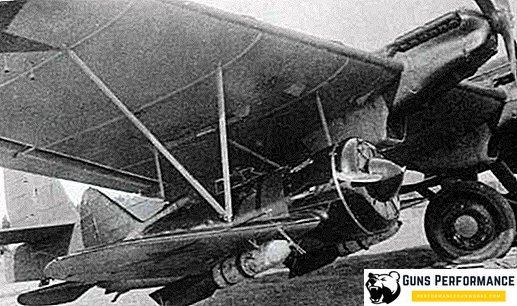
Civil application
TB-3 was actively used for civilian needs. Of particular note is the crucial role that these aircraft played in the development of the Arctic and the Far North. For flights in the north, a special modification of the bomber was created - ANT-6-4M-34R Aviarktika.
This aircraft had a reworked nose, a closed cockpit, instead of carts, large wheels and tail wheels were installed. The aircraft’s streamlining was also improved and three-bladed metal screws were installed.
On May 21, 1937, ANT-6 landed on the northernmost point of our planet. In the future, the aircraft of the "Arctic" modification made hundreds of flights in the conditions of the Far North, which once again proves the reliability of this machine.
Also, TB-3 was actively used as a passenger and cargo aircraft.

Technical characteristics TTH TB-3
Below are the flight performance of the TB-3.
| Modification | TB-3 |
| Wingspan, m | 41.80 |
| Length m | 25.10 |
| Height, m | 8.5 |
| Wing area, m2 | 234.50 |
| engine's type | 4 PD MF-34FRN |
| Power, hp | 4 x 900 |
| Max. speed, km / h | |
| on the ground | 245 |
| on high | 300 |
| Practical range, km | 2000 |
| Max. rate of climb, m / min | 75 |
| Practical ceiling, m | 8000 |
| Crew | 6-8 |
| Armament | 4 × 7.62-mm machine gun YES, 3000 kg of bombs |



